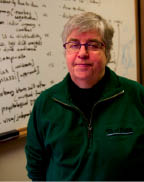College, Re-envisioned
Higher ed for the 21st century
Higher ed for the 21st century
In St. Paul, Minnesota, the city’s mixed-use housing policy is based on a survey conducted by anthropology students at Macalester College—part of the urban service required by their program.
The University of Rochester in New York State has created a Center for Entrepreneurship that serves faculty, students and community members from different fields.
And at the University of Southern Maine Lewiston-Auburn, a course called “Globalization and Its Discontents” looks at the impact of globalization in local communities. That has relevance for USM students, who mostly hail from the region and stay in it after graduating. Also, Maine’s Somali immigrant population is among the nation’s largest.
It’s all part of a 10-year campaign being waged by the Association of American Colleges and Universities (AAC&U) to champion a 21st century vision of liberal education at institutions ranging from major universities to two-year technical colleges.
One goal of this endeavor—known as LEAP, for Liberal Education and America’s Promise—is for students to gain an understanding of human cultures and of the physical and natural world. Another is to ensure that they will use their skills to improve society—and that those skills are broad enough to be adapted to new problems and challenges.
“AAC&U is making a case that education in America has to change,” says Lee Knefelkamp, TC Professor of Psychology and Education and a Senior Scholar with AAC&U. Knefelkamp has been part of LEAP for the past 20 years. “In the 19th century, colleges and universities offered a common core of just three majors —medicine, law and religion. In the 20th century, students began covering an increasingly broad range of topics in the early and middle stages of college, balanced by the depth of the major. In the 21st century, we need to achieve both depth and breadth across all four years.”
Liberal education needs to become integrated and cumulative, Knefelkamp says, supported by high-impact practices such as experiential learning, integrative seminars, capstone experiences and student research. “The typical academic catalogue is about collecting the dots, not connecting them. Faculty must help students connect the dots.”
Still another tenet of LEAP is that education must grapple directly with issues raised by human differences.
“You have to bring diversity of race, ethnicity, gender, global status and perspectives into the curriculum in a way that enriches and complicates it,” Knefelkamp says. “Because you can fill a room full of diverse people, but that diversity isn’t engaged if the only opinion expressed is that of the faculty or the only perspective is that of the reading.”
AAC&U—the largest national organization of colleges and universities—is led by Carol Geary Schneider, an education scholar whom Knefelkamp calls “the John Dewey of this generation.” Its board includes Derek Bok, the former President of Harvard; Lee Shulman, former President of the Carnegie Foundation for the Advancement of Teaching; University of Michigan President Mary Sue Coleman; and Freeman Hrabowski, President of the University of Maryland at Baltimore.
Building consensus among such high-powered educators can be difficult, but AAC&U, which engages in an ongoing pulse-taking of students, faculty, administrators and employers through public hearings, has found widespread agreement on what a 21st century liberal education should look like. According to a LEAP poll, more than 70 percent of employers want colleges to place more emphasis on science and technology, global learning, teamwork skills in diverse groups, written and oral communication, and applied knowledge in real-world settings. A growing number of states have also officially embraced LEAP’s principles of excellence and essential learning outcomes.
Still, the devil is in the details.
“Institutions need to be reinforcing the importance of liberal education in multiple ways,” Knefelkamp says. “You have to build it into tenure as well as curriculum so that faculty will make it happen. We hope to help institutions create coherent, transparent, connected efforts that are assessed and rewarded.”
The LEAP initiative also calls for faculty to assess how their colleges and universities are implementing such procedures. A set of recommended assessment criteria contained in a new document created by AAC&U (viewable at www.aacu.org/leap) is meant to be flexible enough to account for the particular nature of each institution’s student population.
“You do all of this better if you understand who the student is intellectually, personally and culturally,” Knefelkamp says.
Published Wednesday, Dec. 15, 2010
